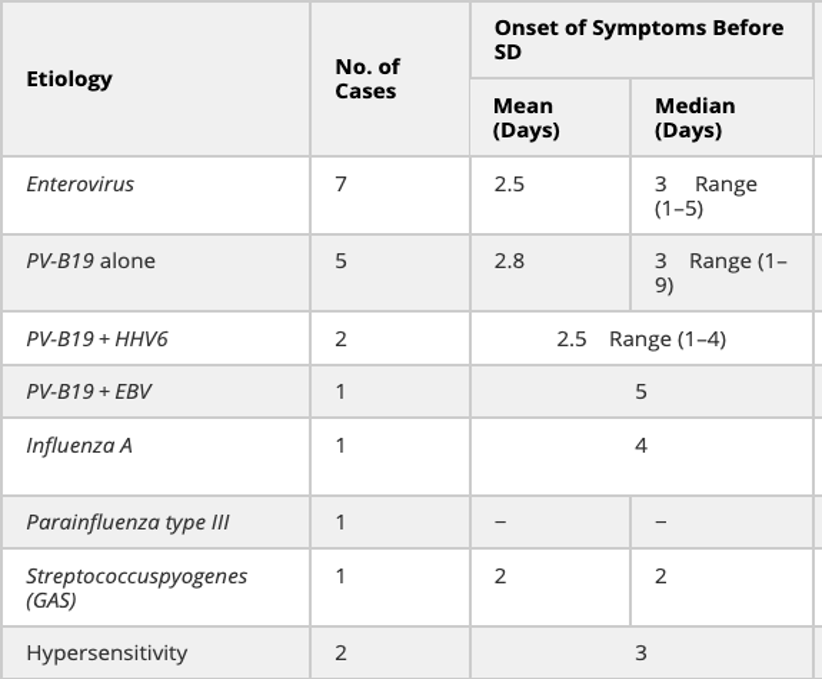There have been many case reports of myocarditis, sometimes leading to sudden death, in infants and children. Large studies of viral causes of myocarditis in both infants adults also have incriminated HHV-6, parvovirus B19 and other viruses as a potential cause in a significant subset of cases (Das 2020, Comar 2009, Reddy 2017, Kuhl 2005).
Investigators at Sheffield Children’s Hospital NHS Foundation Trust in the UK conducted a retrospective analysis of autopsy results from 813 infants and children who died suddenly and unexpectedly between 2009-2019. Although general protocols were in place for the post-mortem examinations, not all examinations were conducted identically. For example, although PCR examinations for viral nucleic acids were often conducted on frozen tissue they sometimes had to be performed on fixed and “dewaxed” paraffin-embedded samples. No data are presented on the use of positive or negative controls to establish the sensitivity and specificity of the assays used, on either frozen or fixed, paraffin-embedded specimens.
A diagnosis of myocarditis was confirmed pathologically in 23 of the 813 children (2.8%). Of these 23, some evidence of an infectious agent in myocardial tissue was found in 18 of the 23 (78.3%), eosinophilic hypersensitivity myocarditis in 2 of 23 (8.7%) and no clear cause in 4 of 23 (17.4%).
The specific viral (and bacterial) agents identified in the diseased tissue are summarized in the table below. The most frequently-identified viruses were enteroviruses and parvovirus B19.

Table – Infectious agents identified (20/24 cases) in myocardial tissue in children with myocarditis.
This study finds that some cases of sudden death in infants and children may be due to myocarditis, and that infectious agents are present in the diseased myocardial tissue in most cases. Although it is reasonable to conclude that the viruses present are the cause of the myocarditis, no studies of infectious agents were conducted in the heart muscle of children dying without pathological evidence of myocarditis. It is possible that these agents sometimes infect the heart, but don’t cause disease—they are just “innocent bystanders” found in diseased tissue.
As for the reported prevalence of various infectious agents in myocardial tissue, one needs to know more about the sensitivity and specificity of the assays used.
Read the full article: Neagu 2021

